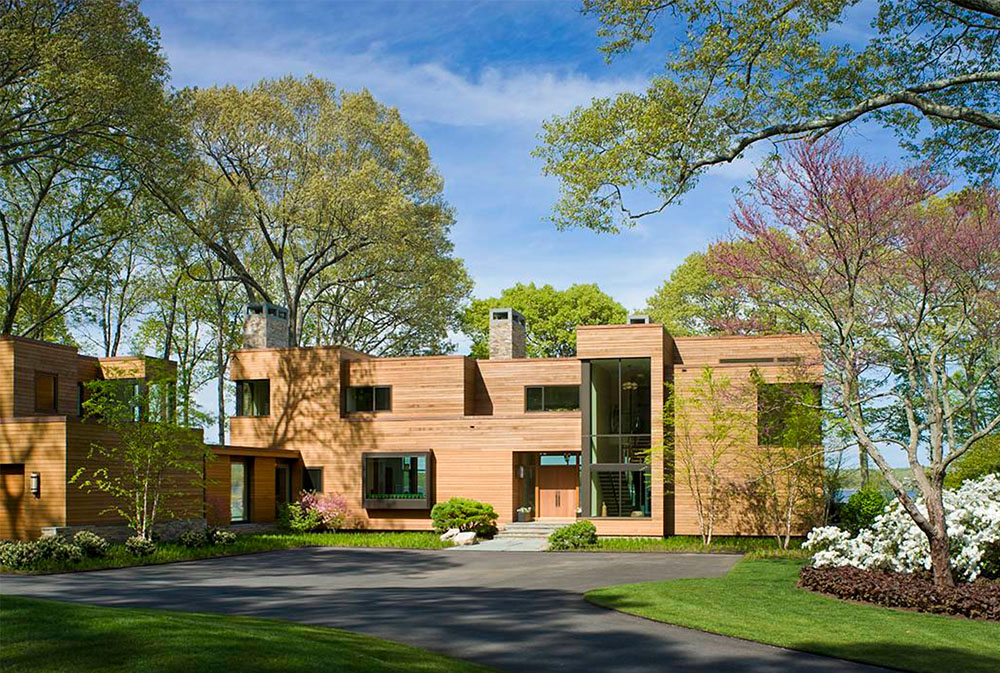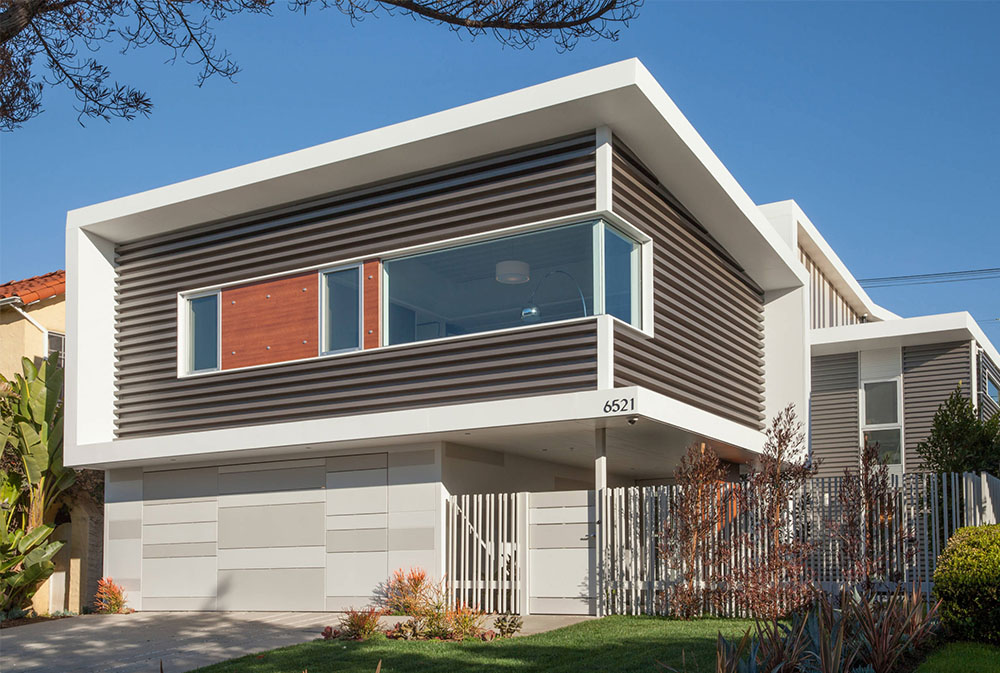Advertisement
Modern architecture has become quite difficult to define.
For many people, especially fans of modern architects, it’s become something where you know it when you see it.
It becomes hard to express your appreciation for these modern buildings properly, especially to people who don’t truly understand. So what is modern architecture? How do you define it?
What is Modern Architecture
Modern architecture is the term used to refer to an architectural movement that emerged in Europe. It then spread to the other parts of the world throughout the 20th century, gaining popularity after World War II.
The style certainly has regional variations from distinctive modern Chinese architecture to equally modern Japanese architecture, but every building in this style shares some common traits.
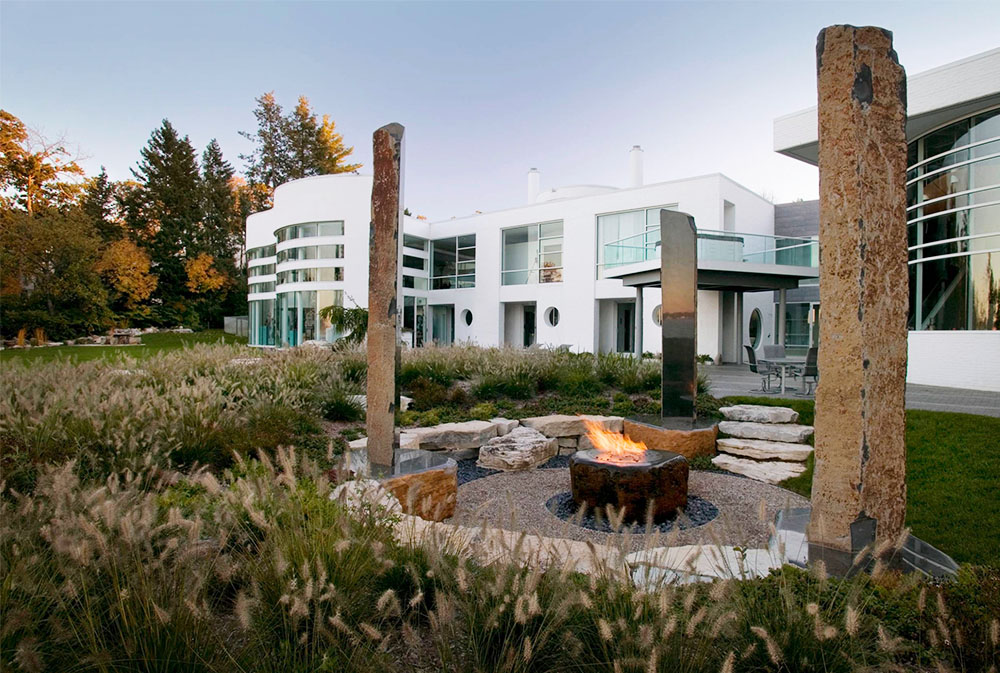
Image source: Daryl Toby – AguaFina Gardens International
Core Principles
Modern architecture characteristics are distinctive to the style. First and foremost, function defines form. A modern building is functional above all and its form follows from what it needs to do. The purpose defines every aspect of the building.
For instance, the Guggenheim Museum in New York was designed by Frank Lloyd Wright to guide people through a flowing, ribbon-like gallery of art galleries and displays. Modern buildings are designed around the natural flow of human beings through them. They don’t herd people so much as allow them to move as they would naturally want to.
Modern architecture styles are also simple yet sophisticated. There is no unnecessary adornments on a modern building, no gargoyles or elaborate molding. The lines are strong and crisp, highlighting the true outline of the building and not burying it in confusing details.
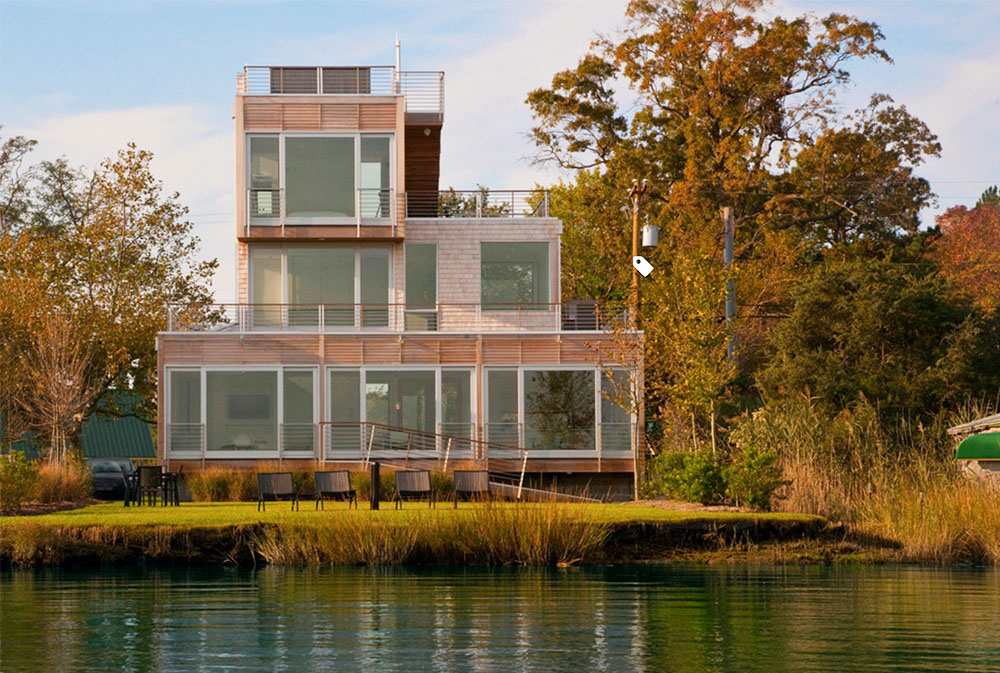
Image source: McInturff Architects
This does not mean modern buildings are simple rectangles at all times. A number of them make use of curves and sleek, almost organic shapes, though there is still a crispness to them.
If several modern buildings are part of a campus or complex, they are not clustered or crowded together. There is no sense of claustrophobia, even if the building or buildings are made from concrete.
Space is an important principle of modern architecture. If the space is gathering place for pleasure or for business, it should not feel like people are packed in like sardines.
Both without and with, modern buildings keep their design minimalistic. A modern interior space will not have excessive ornamentation or convoluted internal room structure. This minimalism is not stark, but instead meant to be peaceful and soothing. Modern buildings strive to create a stress-free environment.
Many modern architecture designs have large open spaces that use a lot of glass for a lighter feel. External windows tend to be quite large to let in a lot of natural light. Layout and location takes on even more importance in modern architecture, as there is little to hide odd or off design choices.
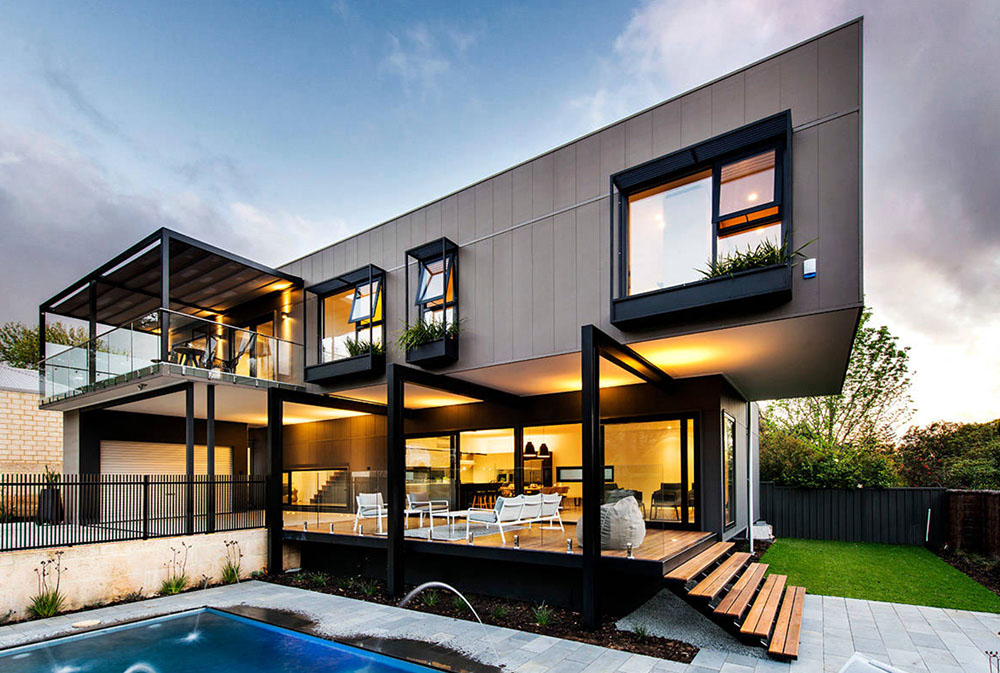
Image source:
McInturff Architects
Linear lines help maintain the minimalist look while at the same time as adding interest. Beams, posts, and staircases all add visual interest to these large, open, unornamented spaces.
For all their sleek lack of complication, modern architecture still seeks to connect with the great outdoors. Fallingwater, another design by Frank Lloyd Wright, exemplifies this, evoking the waterfalls nearby while retaining clean modern lines. Many other designs make use of large walls of glass to give the illusion that there is no separation from the outside environment and the inside one.
The nature of the plot the modern building is sitting on has an immense influence on the building’s design. Even crisp, decidedly manmade lines are meant to look like they belong in the area.
All this said, modern buildings still have a lot of room for color and personality. Interesting materials add texture, sometimes in unexpected ways, and the simplicity of the overall design allows art displays and even furnishings to truly be highlighted.
Modern home architecture should still retain a sense of warmth, which is often helped by a linearly styled fireplace in gathering areas as well as the use of warm toned wood.
Appliances are often tucked away. Modern kitchen designs often have a lot of swing out shelves and major kitchen appliances can be found in all sorts of pleasing colors in order to fit in aesthetically.
Modernist refrigerators rarely have magnetic fronts so that they do not become cluttered with random items. Kitchen islands often have hidden nooks and crannies for large appliances to be kept and stored.
A lot of modern home designs have very open floor plans, which manage to both maximize space and privacy in personal rooms. People have a large comfortable space to gather, often with large sliding glass doors to a patio or balcony, while rooms are off to the side and don’t become gathering places.
More recent modern architectural designs have a particular desire to be environmentally aware. Appliances and materials are often designed around energy friendliness and a reduced carbon output.
Windows are installed with an eye to maximum energy efficiency. As bare as modern home architecture can seem, it is usually quite technologically advanced and very carefully designed.
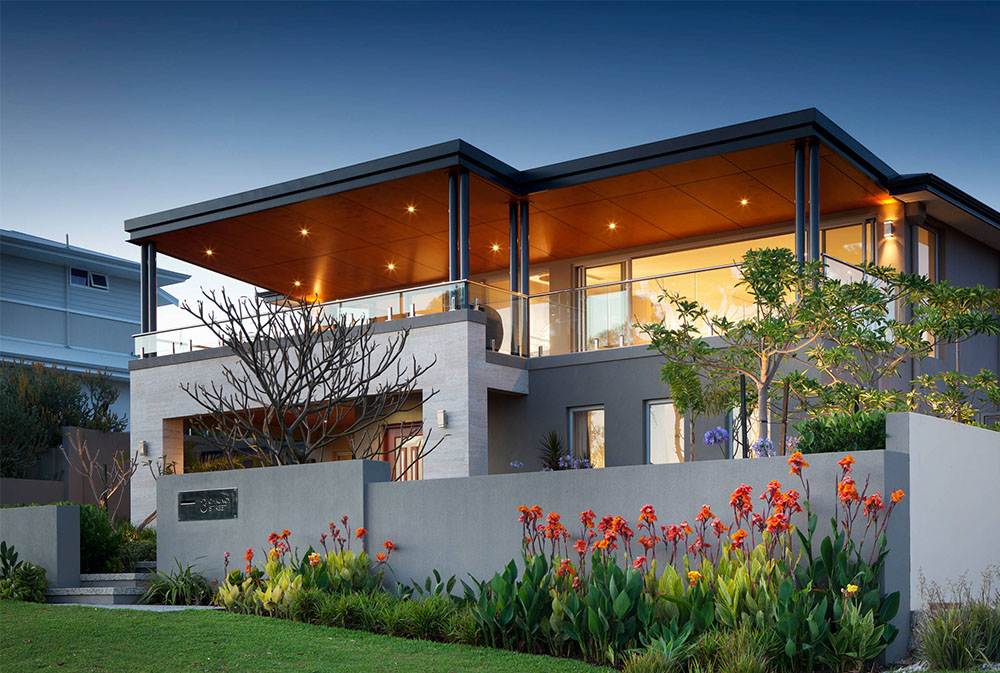
Image source: Summit Homes Group
Here’s a simple list of modern architecture characteristics to help you understand:
- Simple in form and function
- Simple cladding & wall finishes
- Clean, light-filled open spaces
- Simple detailing with no decoration
- Strategic use of materials for visual interest, texture, and personality
Common Materials in Modernist Architecture
Modern architecture is known for its frequent use of bare concrete. However, there is also ample use of steel, glass, and even wood. The structure of the modern building is almost bared, so the materials that are used in it internal construction are also used externally. They are not meant to plastered or painted over, instead demonstrating a unique stylistic honesty about the nature of the building.
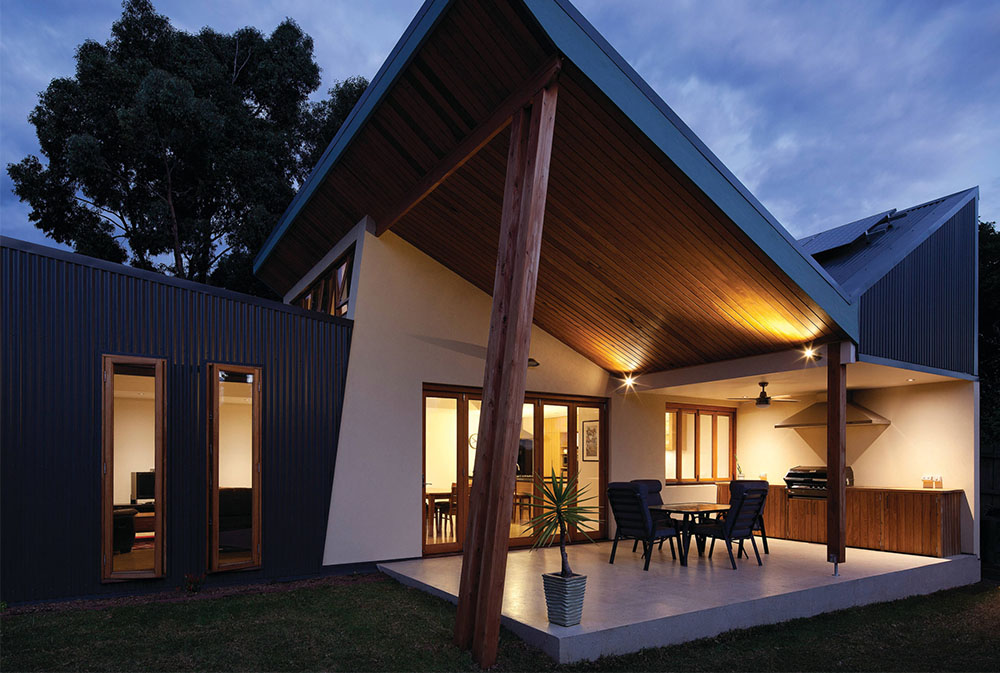
Image source: Maxa Design
Natural materials like stone are often left in an unfinished state. Many modern buildings try to utilize local materials in an effort to create a sense of unity with the landscape as well as a desire to be environmentally friendly.
Ending thoughts on modern architecture
Modern architecture produces some cool buildings around the world, from sprawling to museums to futuristic skyscrapers to amazing modern homes. Modern architecture provides a more peaceful environment, free from clutter and completely functional.
If you liked this article about modern architecture, you should check out these as well:

